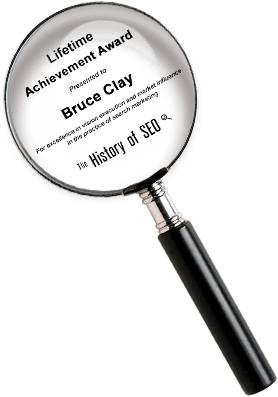How do I diagnose visibility gaps in Gemini and AI Overviews?

- Overview
- What I Think
- Deep Dive: Map and Optimize for AI Visibility
- 24-Step Action Plan
- Quick Solutions
- About Us
Overview
Google’s Gemini-powered AI Overviews are reshaping visibility on the search results page. But unlike traditional rankings, your content might be cited — or skipped — with no clear explanation. Diagnosing why some pages surface and others don’t in AI Overviews requires a new approach to visibility analysis. It’s no longer enough to track rankings alone. Instead, SEOs must uncover hidden gaps across content depth, semantic coverage, E-E-A-T signals, and structural markup.
Here, we’ll explore how to systematically identify and address those gaps so your content has a better chance of inclusion — and a stronger position in the evolving SERP landscape.
What I Think
I believe most visibility gaps in AI Overviews happen because marketers are still optimizing for page-one blue links — not for citation inclusion. That means they’re writing for algorithms of the past, while Gemini pulls answers from context-rich, uniquely structured content built for a dynamic, AI-first experience.
In my work with enterprise brands, I’ve found that AI Overview inclusion often favors sources that demonstrate precision, freshness, and semantic completeness across intent variants. So if you’re not appearing in AI summaries, it’s usually not just one missing element — it’s a pattern of under-optimization.
The key isn’t chasing rankings, it’s reverse-engineering the behaviors of Gemini’s summarization logic and structuring your site to feed it clean, complete, helpful answers.
Deep Dive: Map and Optimize for AI Visibility
Visibility mapping will help you identify gaps. Start by listing all key topics your brand covers, then manually review AI Overview results for each related query type — especially “how,” “why,” “define,” and comparison-intent searches. Is your brand cited in the Overview? If not, are you competitors? Which ones?
You’ll need to determine which of your URLs appear in AI panels and how often. You can do this by using schema-rich plugins, Chrome extensions like SEO Pro, and platforms like Authoritas or SISTRIX. This will give you a benchmark for inclusion and frequency.
Next, perform a semantic gap analysis with tools like Clearscope or MarketMuse to compare your page’s topical depth against high-authority results already cited. Do you offer factual detail, definitions, expert commentary, or original data? These are common AI inclusion triggers.
Structure matters, too. AI Overviews favor well-structured lists, steps, and heading hierarchies — because they’re easier to parse. Pages lacking in semantic HTML, internal linking, or E-E-A-T signals often fail to surface. Technical SEO elements like authorship, structured data, and Google-Extended settings play a role as well.
Finally, look at intent friction. Many pages over-optimize for a single keyword or conversion funnel and ignore mid-funnel validation or related questions Gemini may prioritize. To earn AI citations, content needs to be multi-intent aware — matching question flow, not just search volume.
Related reading: How Google’s AI Overviews are changing click behavior and SEO metrics
24-Step Action Plan
- List your top 50 commercial and informational keywords
- Identify which trigger AI Overviews on desktop and mobile
- Audit if your URLs appear in those summaries
- Document which competitors are being cited instead
- Extract AI summaries and analyze cited content structure
- Evaluate topical coverage using semantic mapping tools
- Score each page’s alignment to Gemini-style summaries
- Map gaps in definitions, original research, and expertise
- Check for lack of schema or semantic HTML patterns
- Inspect crawlability and page load structure
- Confirm all key pages pass Google’s Page Experience criteria
- Review Google-Extended settings and opt-in as needed
- Audit author profiles, bios, and trust markers
- Implement FAQs and how-to schemas where relevant
- Map content to intent clusters, not just keyword targets
- Insert definitions and internal links at mid-funnel touchpoints
- Build high-authority internal links toward target pages
- Diversify content types (e.g., video, stats, comparisons)
- A/B test different content layouts and markup styles
- Monitor inclusion volatility monthly
- Track semantic co-citation patterns between your domain and top competitors
- Use AI prompts to simulate Gemini-style summarization behavior
- Score pages against a Gemini-alignment checklist quarterly
- Refresh pages with highest summary potential first
Unsure why your brand isn’t showing up in AI Overviews?
We work with businesses to map, diagnose and close visibility gaps with deep technical and semantic audits.
Let us help you take control of your AI-powered SERP performance.
Quick Solutions
- How do I unify my marketing disciplines under a single operating system?
- How do I prioritize content for AI snippet inclusion and funnel depth?
- How do I govern real-time AI SERP shifts without losing rankings?
About Us
Bruce Clay Inc. has pioneered SEO strategy and training for nearly three decades. From introducing the SEO silo concept to advising global brands on technical frameworks, we bring unmatched depth to every client engagement.
26,000+ professionals, marketers and SEOs read the Bruce Clay Blog
Subscribe now for free to get:
- Expert SEO insights from the "Father of SEO."
- Proven SEO strategies to optimize website performance.
- SEO advice to earn more website traffic, higher search ranking and increased revenue.

Comments are closed








